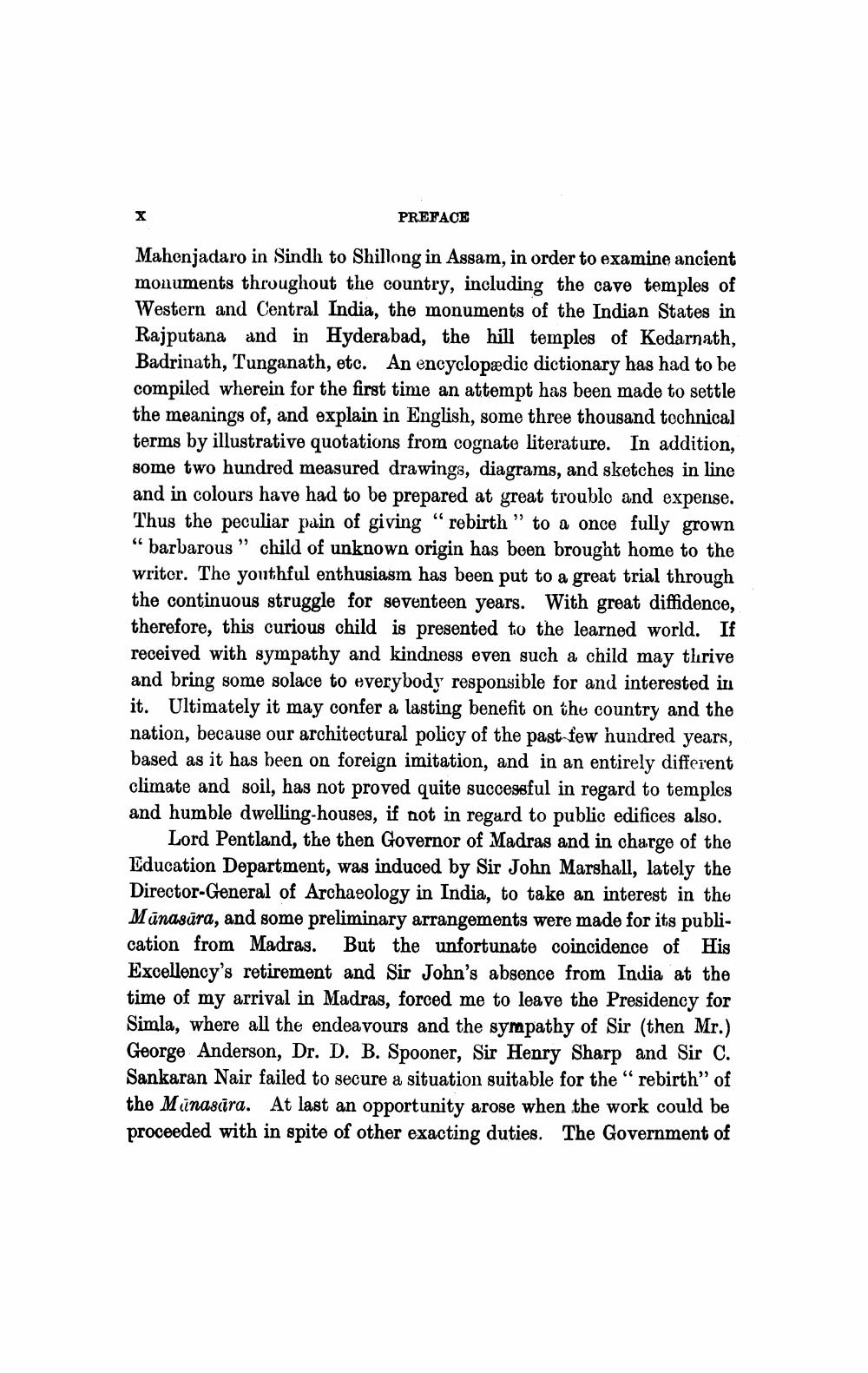________________
PREFACE
Mahenjadaro in Sindh to Shillong in Assam, in order to examine ancient monuments throughout the country, including the cave temples of Western and Central India, the monuments of the Indian States in Rajputana and in Hyderabad, the hill temples of Kedarnath, Badrinath, Tunganath, etc. An encyclopædic dictionary has had to be compiled wherein for the first time an attempt has been made to settle the meanings of, and explain in English, some three thousand technical terms by illustrative quotations from cognate literature. In addition, some two hundred measured drawings, diagrams, and sketches in line and in colours have had to be prepared at great troublo and expense. Thus the peculiar pain of giving “rebirth” to a once fully grown “barbarous” child of unknown origin has been brought home to the writer. The youthful enthusiasm has been put to a great trial through the continuous struggle for seventeen years. With great diffidence, therefore, this curious child is presented to the learned world. If received with sympathy and kindness even such a child may thrive and bring some solace to everybody responsible for and interested in it. Ultimately it may confer a lasting benefit on the country and the nation, because our architectural policy of the past few hundred years, based as it has been on foreign imitation, and in an entirely different climate and soil, has not proved quite successful in regard to temples and humble dwelling-houses, if not in regard to public edifices also.
Lord Pentland, the then Governor of Madras and in charge of the Education Department, was induced by Sir John Marshall, lately the Director-General of Archaeology in India, to take an interest in the Mūnasūra, and some preliminary arrangements were made for its publication from Madras. But the unfortunate coincidence of His Excellency's retirement and Sir John's absence from India at the time of my arrival in Madras, forced me to leave the Presidency for Simla, where all the endeavours and the sympathy of Sir (then Mr.) George Anderson, Dr. D. B. Spooner, Sir Henry Sharp and Sir C. Sankaran Nair failed to secure a situation suitable for the “rebirth" of the Minastira. At last an opportunity arose when the work could be proceeded with in spite of other exacting duties. The Government of




